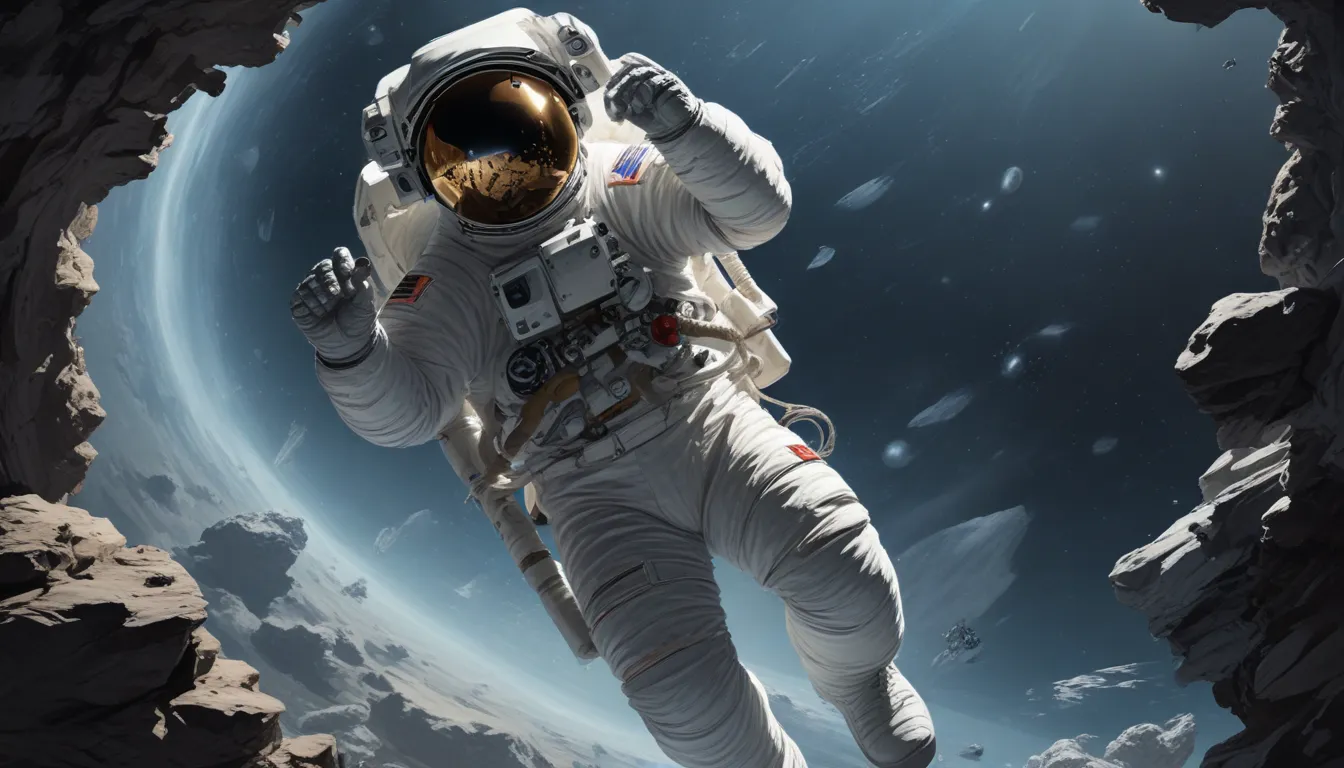The pictures we use in our articles might not show exactly what the words say. We choose these pictures to make you interested in reading more. The pictures work together with the words but don’t take their place. The words still tell you the important facts.
Spacewalks, also known as extravehicular activities (EVAs), are a mesmerizing aspect of space exploration that showcases the audacity and skill of astronauts as they venture into the vastness of space. These daring excursions involve astronauts stepping outside their spacecraft to conduct experiments, perform maintenance tasks, and push the boundaries of human capability. From historical milestones to future missions, spacewalks play a crucial role in advancing our understanding of the cosmos. Let's delve into 14 fascinating facts about spacewalks that highlight the remarkable accomplishments of these cosmic explorers.
The First Steps into the Unknown
- The first-ever spacewalk occurred on March 18, 1965, during the Voskhod 2 mission by Russian cosmonaut Alexei Leonov. He spent over 12 minutes floating freely in space, setting the stage for future extravehicular activities.
Into the Void: The Longest Spacewalk on Record
- The record for the longest spacewalk in history belongs to Russian cosmonauts Fyodor Yurchikhin and Alexander Misurkin, who spent an incredible 8 hours and 7 minutes outside the International Space Station (ISS) in 2013. Their mission involved installing equipment and performing essential maintenance tasks.
Training and Preparation: The Backbone of Spacewalks
- Astronauts undergo rigorous training and use specialized spacesuits, known as Extravehicular Mobility Units (EMUs), to ensure their safety during spacewalks. These suits provide essential life support systems and protection from the harsh environment of space.
Beyond Science: The Maintenance Role of Spacewalks
- Spacewalks are not limited to scientific experiments; they also involve routine maintenance tasks such as repairing equipment, replacing parts, and testing new technologies. Astronauts play a vital role in ensuring the smooth operation of spacecraft and space stations through their extravehicular activities.
A Spiritual Perspective: The Overview Effect
- Astronauts experience a profound sensation known as the "Overview Effect" during spacewalks. This unique perspective of seeing Earth from space and being surrounded by the universe offers a transformative view of our planet and its place in the cosmos.
Risks and Challenges: Navigating the Hazards of Space
- Spacewalks are not without risks, as astronauts face extreme temperatures, micrometeoroids, solar radiation, and equipment malfunctions. Meticulous planning and preparation are essential to ensure the safety and success of each mission.
The Pioneering Role of Spacewalks in Space Station Construction
- Spacewalks have been instrumental in the construction of the International Space Station (ISS). Astronauts have conducted numerous spacewalks to assemble modules, connect cables, and perform necessary upgrades on the ISS.
Women in Space: Breaking Barriers in Extravehicular Activities
- The first American woman to perform a spacewalk was astronaut Kathryn D. Sullivan in 1984 during the STS-41-G mission. Her historic achievement paved the way for future women astronauts to participate in spacewalks.
Future Frontiers: The Role of Spacewalks in Space Exploration
- Spacewalks continue to be an essential part of space exploration and will play a crucial role in future missions, such as the Artemis program aimed at returning humans to the Moon and eventually sending astronauts to Mars.
Pushing Boundaries: The Evolution of Spacewalk Technology
- Space agencies continually improve spacewalk procedures and technology to ensure the safety and success of missions. The advancements in spacesuit design, training methods, and equipment have transformed the way astronauts conduct extravehicular activities.
The Cosmic Connection: Spacewalks and Celestial Exploration
- Spacewalks have played a vital role in the exploration of other celestial bodies, such as the Apollo missions where astronauts performed lunar extravehicular activities to collect samples and gather valuable data about the Moon.
Coordinated Efforts: Communication and Collaboration in Spacewalks
- Spacewalks require high levels of coordination between astronauts and ground control teams. Effective communication is essential to ensure real-time instructions and assistance during extravehicular activities.
Into the Unknown: The Future of Spacewalks
- As we look ahead to future missions, spacewalks will continue to be a cornerstone of human space exploration. These daring excursions into the unknown provide valuable opportunities for scientific research, technological advancements, and expanding our understanding of the universe.
Embracing the Wonder of Spacewalks
Spacewalks represent the pinnacle of human exploration, showcasing our ability to overcome challenges and push the boundaries of what is possible. From historical milestones to future missions, spacewalks continue to captivate and inspire us all as we journey into the vast expanse of space.
FAQs
-
What is an extravehicular activity (EVA)?
- An extravehicular activity, or EVA, is a spacewalk where an astronaut leaves the confines of their spacecraft and works outside in the vacuum of space.
-
How long do spacewalks typically last?
- Spacewalk durations vary, ranging from a few hours to several hours, depending on mission objectives and tasks.
-
How do astronauts prepare for spacewalks?
- Astronauts undergo extensive training, practice in neutral buoyancy tanks, and learn to use specific equipment for spacewalks.
-
Can astronauts float away during a spacewalk?
- Astronauts are tethered to their spacecraft during spacewalks to prevent floating away and ensure their connection to the shuttle or space station.
-
How do astronauts move around in space during a spacewalk?
- Astronauts use a Hand-Held Maneuvering Unit (HHMU) for propulsion and navigation during spacewalks.
-
Have there been any accidents during spacewalks?
- While risks exist, accidents during spacewalks are rare due to stringent safety protocols and procedures.
-
What are the objectives of a spacewalk?
- Spacewalk objectives include conducting experiments, repairs, maintenance on spacecraft, deploying/retrieving satellites, and testing new equipment.
Embark on a journey of discovery with spacewalks and immerse yourself in the wonders of space exploration. Witness the remarkable achievements of astronauts as they boldly step into the unknown, pushing the boundaries of human endurance and knowledge in the final frontier.






